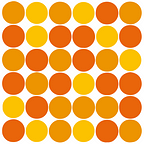What’s my value proposition?
It’s a statement of what your product does, what problem it solves, who the target audience is, and what benefit it provides to them.
It’s important because it’s the filter through which you need to run decisions around product capabilities and priorities. As in, when a feature request is made, you use your value proposition to validate whether it’s something you should be doing right now. The val prop is your statement of focus.
It can evolve as your products’ position in the market changes. Maybe you’ve crossed the chasm; perhaps you’ve acquired a competitor, or you’re entering a new market (with a different val prop).
Everyone in your organisation needs to know what the val prop is, and be able to state it. It’s your elevator pitch too. It’s all part of the stay focused idea. Everyone should always be asking “is this aligned to the val prop?”. This alignment is also true of the val prop itself: it needs to be aligned to your vision and purpose as an organisation.
It also keeps you laser-focused on your target customers and their needs. Remember, it’s a statement of what you do, why, who for, and for what benefit.
How do you write one?
There are lots of templates and formats, but this one is very easy to use and remember. Write five to 10 words for each of the blanks in the formula below:
For ____________ (target customer profile)
who ____________ (statement of the problem, need or opportunity)
our (product/service name) is ____________ (product offering)
that (statement of benefit) ____________ .
That’s your value proposition. It says what your product does, what problem it solves, who you’re targeting, and what benefit it delivers to them. I’ll write separately about the fact that this is a hypothesis until you validate it, but assume you’ve done the research and this is indeed evidence-based.
An example
For the over 50s
who like salt but are worried about their salt intake
our widget delivers a diminishing amount of ground rock salt every time you use it.
It gradually reduces your salt intake without you noticing so reducing your risk of heart disease.
Shall we market this to fast-food chains? No, these are little used by the over 50s.
Shall we target Japan? No, high salt intake there comes from soy sauce.
Shall we market this in The Oldie? Yes, this magazine is aimed at our target market segment.
Another example
For hard-of-hearing car drivers
who are tired of crunching their cars while parking,
our widget is a tuneable frequency parking sensor that you control.
It stops you touching anything while parking so saving you money on repair bills.
Shall we target young drivers? No, these are not the folks who typically have hearing loss.
Shall we target higher-end cars for OEM fitment? Yes, older drivers are more likely to have hearing loss, and they are more likely to buy high-end vehicles (that are also more expensive to repair).
Shall we develop a smartphone app as part of the MVP? No, this overcomplicates the offering for the target market.
And finally
The val prop is one of the most useful things you can do to keep the focus on your customers’ needs. It also keeps everyone in your organisation pulling in the same direction, towards the same well-understood goal.
